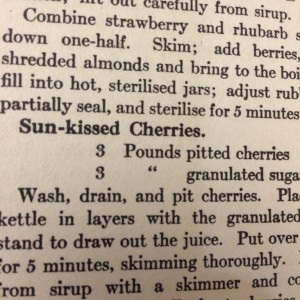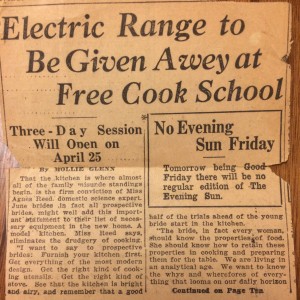This chapter is 19 pages long, and is stained several times with black ink from a fountain pen, as if to mark the particular recipe — for example the “Golden Gate Marmalade” on page 65.
The high quantity of fruit here must be noted. For example, the aforementioned marmalade calls for 12 oranges, three pints of cold water for each pound of fruit, and half a pound of sugar to each pound of cooked fruit. While people used home preserving and canning as a method to save money, this seems rather expensive, especially if you consider individuals living in the Pacific North West, where the climate does not allow for many locally-grown citrus fruits.
One recipe in this section is for “sun-kissed cherries.” The recipe actually calls for the heated cherries to lay out in the sun for 12 hours, which doesn’t seem like something that would be written in a contemporary cookbook today.
Although these recipes at first appear “hands-off” and simple, they all require close attention, timing, and multiple steps. The absence of step-by-step instructions means that the paragraph style of the page provides a more difficult estimate for the labour process.
The chapter ends with the line:
“Any combination of fruits may be used in same way.”
Essentially, the detail provided in the chapter could be considered redundant, but is useful for creative ideas.

